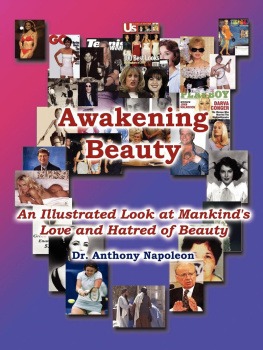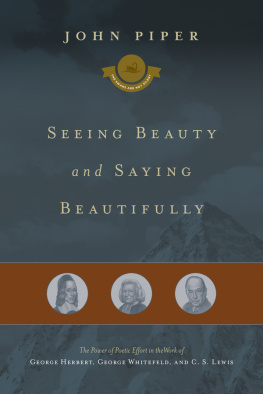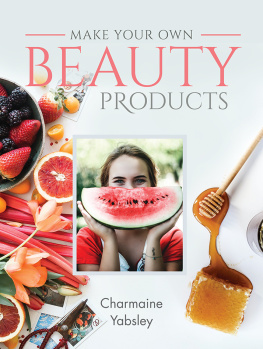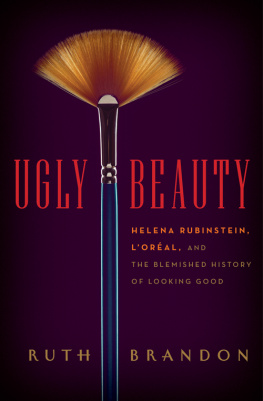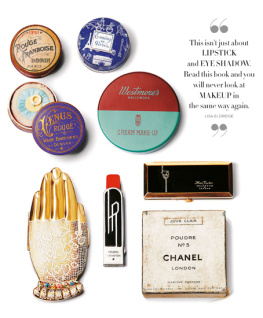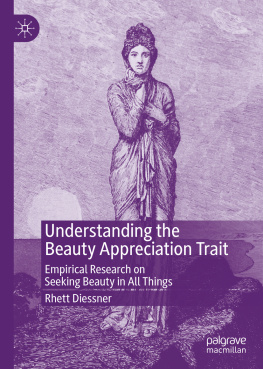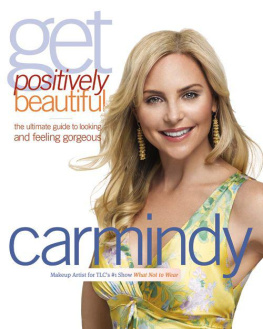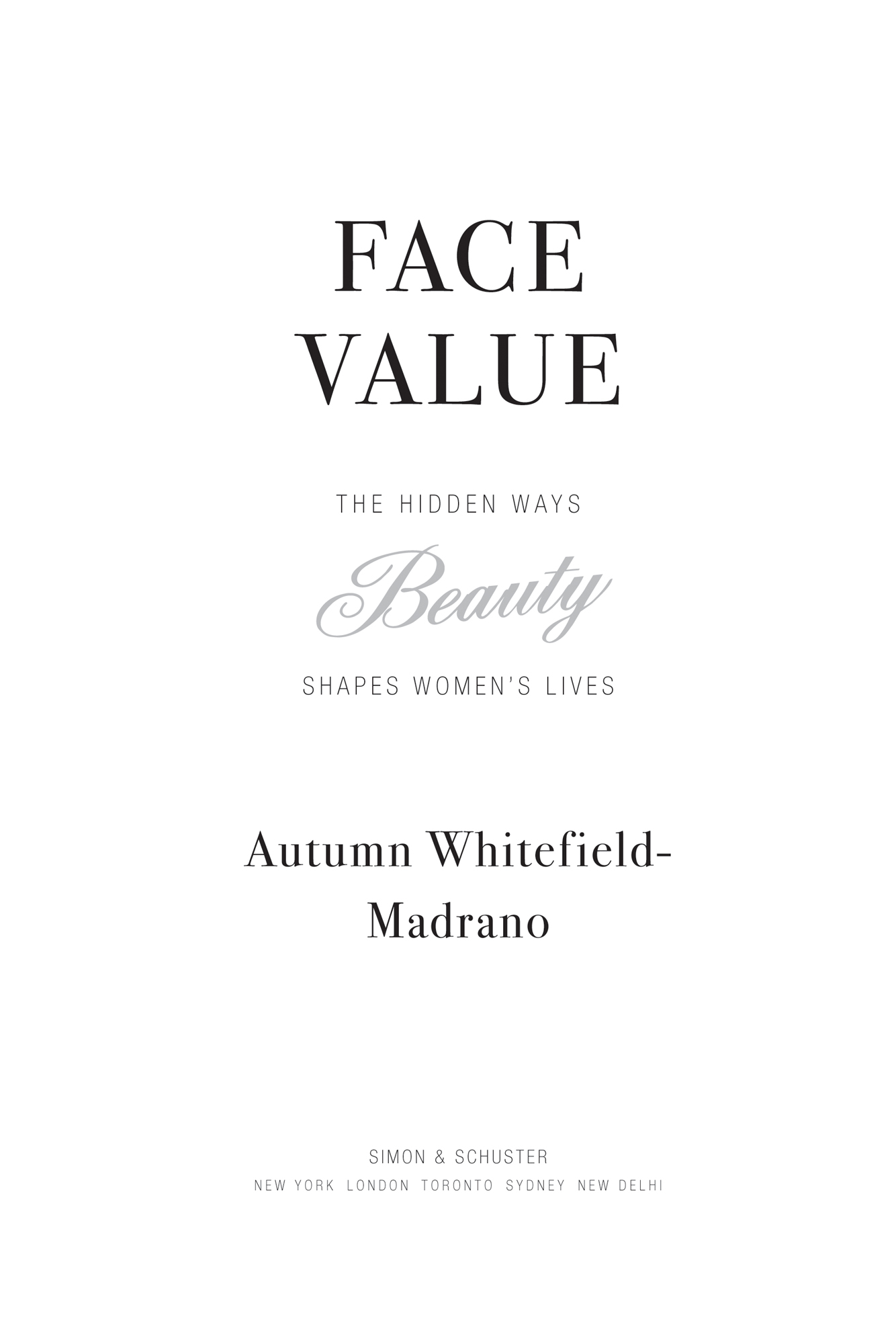Thank you for downloading this Simon & Schuster eBook.
Join our mailing list and get updates on new releases, deals, bonus content and other great books from Simon & Schuster.
C LICK H ERE T O S IGN U P
or visit us online to sign up at
eBookNews.SimonandSchuster.com
We hope you enjoyed reading this Simon & Schuster eBook.
Join our mailing list and get updates on new releases, deals, bonus content and other great books from Simon & Schuster.
C LICK H ERE T O S IGN U P
or visit us online to sign up at
eBookNews.SimonandSchuster.com
For Cam
Authors Note
T HE EXPERIENCES OF MANY of the women and men I interviewed have remained private until nowand, for that reason, are mostly presented here with anonymity. Last names in this book have almost universally been omitted, with first names and identifying details changed upon request. The dozens of in-depth interviews I conducted were formal and recorded, but I also share a sprinkling of experiences Ive heard in passingcast-off anecdotes from women Ive met at parties, stories I heard before I began writing about beauty that stuck with me through the years. (Im also not above bursting into strangers conversations on the subway to learn more if I happen to eavesdrop on a juicy morsel.) I made a point of interviewing a number of women who were demographically unlike methat is, not white, heterosexual, middle-class, able-bodied urbanites. In doing so I was looking for the threads that bound us together. Certainly women of color navigate a different set of challenges in regard to beauty than white women do; black women, for instance, have historically been both desexualized and hypersexualized more than white women. Women of every ethnic group in America have faced, and continue to face, assumptions about their appearance and self-image in ways that intersect with stereotypes about their race. For example, the fetishization of Asian women plays into larger racist notions of East Asians as the model minority. As one woman of Korean descent told me, Im supposed to look like some sort of sex toy, and Im supposed to be good at math too? Its like, dont I get a break? When someones personal information is pertinent to the themes of this booklike, say, when a queer woman talks about comparing her body with her girlfriends, an experience straight women are less likely to be familiar withIve included relevant details. Women, regardless of color, economic standing, and sexuality, face a matrix of choices, expectations, and stereotypes about personal presentation that revolve around the idea that women should try to be perfectly pretty at all times. That is the common thread Ive explored here, and my hope is that this book will shed enough light on the conditions we share for each reader to see how it has played out in her or his own life.
INTRODUCTION
Beyond the Beauty Myth
H and me my makeup kit, would you? Chat with me as I walk through my morning routine. Retinol cream first, then moisturizer. Ill mix together two shades of foundation to get just the right tone, perhaps getting annoyed at the extra step but also taking a second to think of the Irish-Scottish-Caddo-Cherokee family tree thats given me my particular complexion. Concealer is dotted around my nose and mouth, blush dusted onto the cheeks; bronzer if I feel like playing the golden girl that day, none if I feel more like the English rose. Purple liquid eyeliner; funny how once I switched from black, people started calling my eyes hazel, not brown. As my neighbora gifted makeup artist in whose chair Ive talked feminism, race, relationships good and bad, and, of course, makeuptold me as she dotted violet onto my lash line for the first time, Thats color theory for ya. She also taught me to articulate my brows with pencil, and every time I do, I take quiet pleasure in how much more it makes me match the image of myself I have in my head. A swipe of mascara. Finally, the lips: nothing most days, a gentle rose on others. And on my boldest daysor on the days when I need to find my boldest selfits unignorable, unoverlookable, unambiguous red. The name of the shade is Talk to Me.
Thats six and a half minutes of my morning, and afterward Im ready to give you my full attention. I feel prepared to show my public self. Its simple, reallyuntil you look a little closer. Right there in my makeup caddy lies a knot of contradiction: Is my makeup routine about revealing my best self (purple eyeliner) or about hiding my flaws (concealer)? What about things like that eyebrow pencilif it makes me appear more like the way I look in my minds eye, am I wise to be fixing the brow line to match, or should I be adjusting my mental image of myself? And then there are the other story lines running through my head: I think of my neighbor nearly every time I reach for that eyeliner, and I relish the conversations weve had when Ive sat in her chair for a quick haircut or makeup advice. But we rarely hang out otherwise, even as we always part ways by promising to grab a cocktail soon. Beauty has given us an inroad to connection, but have the limitations of that inroad limited our friendship as well?
Beauty invites gaps in our thinking. Theres the gap between how people look and how we aspire to look, the gap between appearance standards for men and those for women, the gap between the words we use to describe ourselves and those we use to describe others. For decades, these inconsistencies have been acknowledged for their negative effect on our lives. Were told that appearance is fraught, forever leaving women feeling like beasts in the face of idealized, retouched, impossibly perfect imagesor that beauty rituals are a trap, distracting women from what really matters.
But viewing womens relationship with beauty primarily as something we must overcome is problematic, and any black-and-white interpretation of how aesthetics shapes us is bound to be one-dimensional. In truth, the gaps in our thinking about beauty host rich possibilities: What about the gap between the theoretic competition and envy beauty breeds in womens relationships with one another, and the reality that shared experiences of beautypedicures with friends, complimenting a colleague on her skirtgive women a way to connect? Or the gap between conventional beauties and the people who become beautiful to us only as we fall in love with them? These gaps exist because we cant reconcile how we think we should be influenced by looks with our actual experiences. And when we gloss over these gaps, we overlook unexpected and often positive ways that beauty fashions our lives.
I want to close these gaps by challenging our assumptions, looking at beauty not only in terms of gender, power, and low self-esteem but sisterhood, ideology, and identity. We need to move the conversation beyond overtweezed brows, wriggling into Spanx, and duck-face selfies to consider instead how looks shape our lives in unexpected, often positive ways. We need to eschew clichs when speakingeven thinkingof our own habits and desires.
Weve got a number of routes toward closing those gaps in understanding how beauty shapes us. Looking at language gives us a direct line to the surprisingly nuanced ways we regard appearance. Examining the pool of scientific data attempting to determine what exactly we find attractive tells us more about the desire to pin down beauty than it does about beauty itself. In the social sciences, well find that looks play a role in forging our relationships, but differently than we might expect. And well see that the media has been successful in linking good looks with other good thingssex appeal, power, wealth, happinessbut that those links arent as straightforward as newsmakers would have you believe.
Next page

